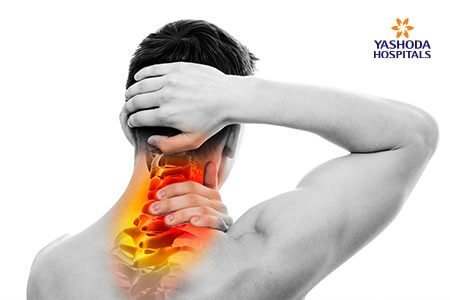Cervical Spondylosis
Causes, Symptoms, Risk Factors, Complications, Prevention, Diagnosis and Treatment
What would you like to know?
What is Cervical Spondylosis?
Cervical spondylosis is a common term that refers to age-related or occupation-related wear and tear that affect the spinal disks in the neck. The dehydration and shrinking of the disks indicate the signs of osteoarthritis, including bony projections along the edges of bones.

What are the causes of Cervical Spondylosis?
The causes of cervical spondylosis
- Dehydrated disks: When disks begin to dry out and start shrinking.
- Herniated disks: Cracks start appearing, which lead to bulging (herniated) disks.
- Bone spurs: Disk degeneration often leads to producing extra amounts of bone in a misguided effort to strengthen the spine. These often form where bones meet each other i.e. in the joints
- Stiff ligaments: Bones can stiffen with age, making the neck less flexible.
You may also interested in reading
Read More Information
References:
- Cervical spondylosis.Mayo Clinic. Available at: https://www.mayoclinic.org/diseases-conditions/cervical-spondylosis/symptoms-causes/syc-20370787. Accessed on June 4, 2020.
- Cervical Osteoarthritis (Cervical Spondylosis). WebMD. https://www.webmd.com/osteoarthritis/cervical-osteoarthritis-cervical-spondylosis Accessed on June 4, 2020.
- Spondylosis: All you need to know. Medical News Today. Available at: https://www.medicalnewstoday.com/articles/312598 Accessed on June 4, 2020.









